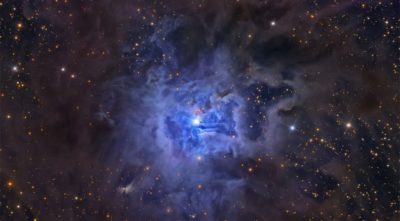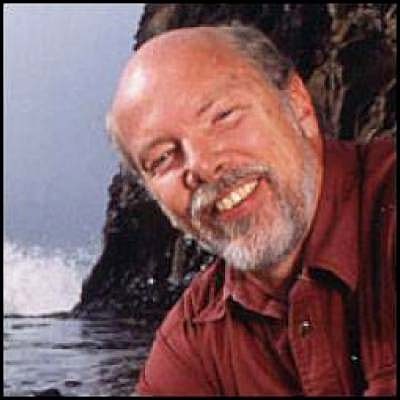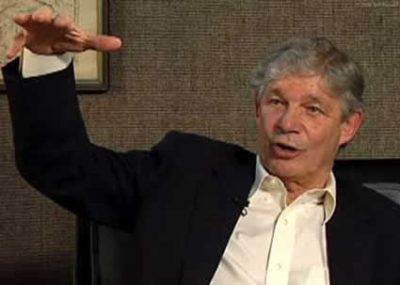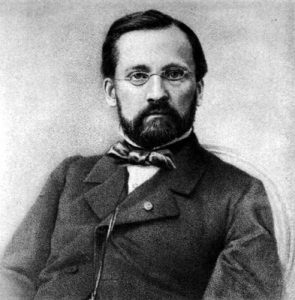 “The origin of life on Earth is a scientific problem,” according to WIKIPEDIA, “which is not yet solved. There are many ideas but few clear facts.” To address this issue, in 2013, Princeton University hosted an international origin of life conference.
“The origin of life on Earth is a scientific problem,” according to WIKIPEDIA, “which is not yet solved. There are many ideas but few clear facts.” To address this issue, in 2013, Princeton University hosted an international origin of life conference.
In the nineteenth century, the “spontaneous generation” theory had long been the natural explanation for the origin of life, starting in Greek philosophy. Even Charles Darwin, centuries later, in The Origin of Species (1859), endorsed the theory.
The famous French microbiologist Louis Pasteur, however, proved the origin of life was anything but “spontaneous.” For the finding, the French Academy of Sciences awarded the Alhumbert Prize to Pasteur in 1862. Since then, a consensus on a replacement theory remained unfinished business.
To develop a consensus for the long-defunct “spontaneous generation” theory, researchers from Canada, the United Kingdom, France, Germany, Mexico, and Japan, representing twenty-seven institutions, gathered for thirty-nine presentations at the Princeton Center for Theoretical Science (PCTS).
Prebiotic Models
John Peters of the Department of Chemistry and Biochemistry at Montana State University (MSU) was first on the agenda. The title of his presentation was “The relationship between early metabolism and prebiotic mineral catalysis.” Montana State University is one of sixteen NASA Astrobiology Institutes (NAI) research teams headed by Carl Pilcher since 2006.
At MSU, Peters has been actively pursuing the discovery of the “prebiotic chemistry… [involved] in the translation between the non-living and the living world.” Of the twenty-six institutions presenting at the convention, eleven receive direct funding from NAI.
The Princeton conference was co-sponsored by the NAI origin of life programs that had awarded $8 million to Carl Woese of the University of Illinois to resynthesize a new origin of life model. Woese was a National Medal of Science recipient in 2000.
RNA World Models
The RNA World paradigm was the featured origin of life theory at the conference. John Sutherland of the Medical Research Council Laboratory of Molecular Biology, Cambridge, UK, and the recipient’s of Harry Lonsdale‘s 2012 “Origin of Life Challenge” presented “Origins of life chemistry – reconciling the iron-sulfur and the RNA Worlds.”
Another one of the Lonsdale winners, Paul Higgs of McMaster University, gave a “The origin of the RNA World” presentation.
Nilesh Vaidya, a post-doctoral fellow at Princeton University, reported succeeding in creating spontaneously emerging self-reproducing autocatalytic sets from RNA fragments, making them replicate “at least three times.”
To the somewhat underwhelming evidence, “not to pile on,” synthetic biologist Steve Benner from the Foundation for Applied Molecular Evolution noted, complexity might have overwhelmed the investigator’s view of the RNA World paradigm.
 Dave Deamer, of the University of California, Santa Cruz, another recipient of Harry Lonsdale’s 2012 “Origin of Life Challenge” grant, was highly anticipated to deliver the best defense for the RNA World theory. However, during the presentation, surprisingly, Deamer focused on his latest invention: the machine to pull RNA through a nanopore.
Dave Deamer, of the University of California, Santa Cruz, another recipient of Harry Lonsdale’s 2012 “Origin of Life Challenge” grant, was highly anticipated to deliver the best defense for the RNA World theory. However, during the presentation, surprisingly, Deamer focused on his latest invention: the machine to pull RNA through a nanopore.
Unfortunately, when Deamer mentioned that the machine has a 4% error rate, Andrew Pohorille of the NASA Ames Research Center countered that “a 4% error is terrible, absolutely horrible.” Deamer countered that he is trying to reduce the error rate to 1%. Responding, Pohorille said that was “still terrible.” The synergy between attendees neared zero.
Non-RNA World Models
Sara Walker of Arizona State University, not an RNA World advocate, gave the presentation entitled “The Algorithmic Origins of Life.” Even though supported by NAI, in an interview with Suzan Mazur before the conference, pointed out –
“I think we need to move away from treating a strict RNA World scenario as the central accepted answer for the origin of life because most of the origin of life community don’t think that’s the definitive answer.”
Consensus
Since the international origin of life conference in 2013, after spending millions of hours and dollars on the project, a validated scientific consensus on the origin of life remains unfinished business. As WIKIPEDIA (2020) explains, “The origin of life on Earth is a scientific problem which is not yet solved. There are many ideas but few clear facts.”
As attendees later noted, the PCTS planners should have invited American theoretical biologist Stuart Kauffman of the University of Vermont. According to Kauffman,
“It’s really unlikely that the earliest life on Earth used anything as complicated as contemporary DNA, RNA, and protein because the machinery by which our DNA gets translated into proteins is incredibly complicated… life could not have started out that complex.”
Genesis
 Evidence in the Genesis account continues to be compatible with available scientific evidence, while an expected natural evolutionary mechanism becomes increasingly remote intensifying Darwin’s Dilemma.
Evidence in the Genesis account continues to be compatible with available scientific evidence, while an expected natural evolutionary mechanism becomes increasingly remote intensifying Darwin’s Dilemma.
As Louis Pasteur, a French chemist and microbiologist, discoverer of the principles of vaccination, microbial fermentation, pasteurization, and developed vaccines for Rabies, Diphtheria, Anthrax noted during the Scientific Revolution –
“A bit of science distances one from God, but much science nears one to Him.”
.Refer to the Glossary for the definition of terms and to Understanding Evolution to gain insights into understanding evolution.

